Whether your horse works at a high-performance level or spends most of their time as a paddock ornament, it’s important to understand how to maintain their required energy levels through their feed. Overfeeding unnecessary types of feed not only becomes expensive, it can also lead to your horse having more energy than you know what to do with!
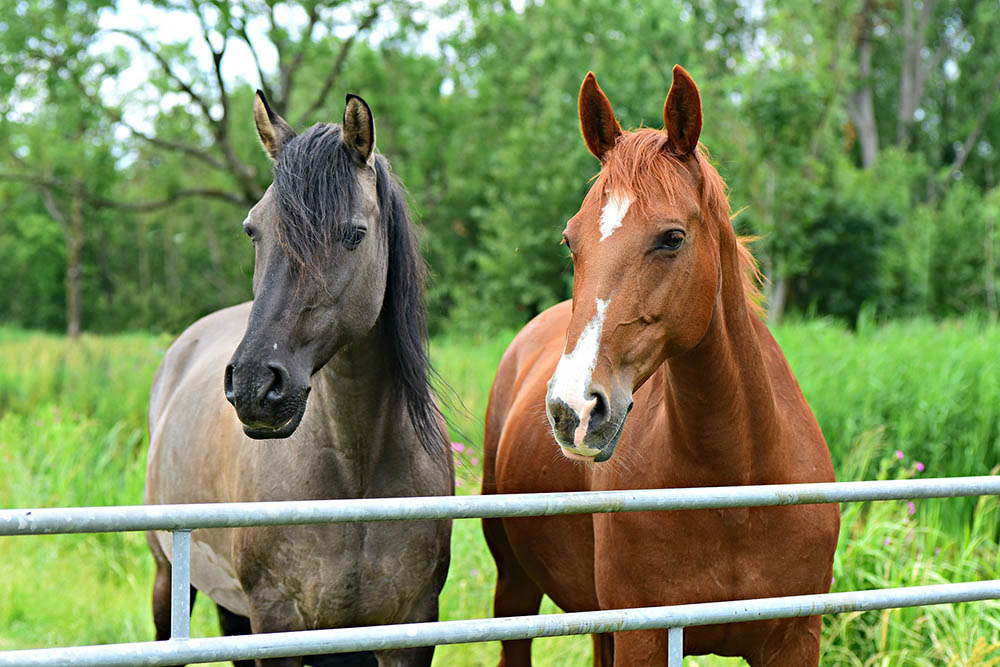
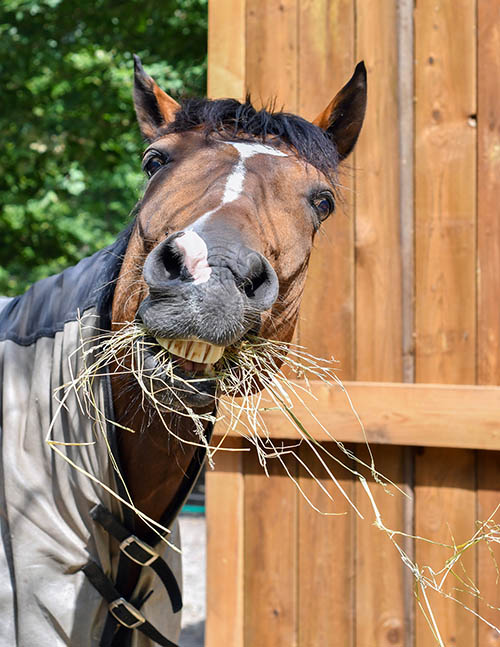
“Grass hay can be quite
unpredictable.”
WHAT WE MEAN BY ‘COOL’ & ‘HOT’ FEEDS
If you’ve been around horses for a while, chances are you’ve heard people talking about feed as having “cool” or “hot” characteristics. But this has nothing to do with temperature! This technical term used for horse feed is all about the energy output that a horse has as a result of what goes in their mouth. If you feed your horse a hot feed because you need them to have enough energy to clear that double or ace that passage, then you can expect them to be nicely full of beans. Conversely, if you have your horse on a cool diet because you’re doing some pretty chill activities, then they should be as cool as a bean.
However, if you are finding your horse has too much energy for you, how do you go about adjusting their feed to a cooler option in the most efficient and safest way? Equine Nutrition Assistant for Hygain, Holly Mills, explains that finding the perfect balance of energy for your horse comes down to several factors, not least of which is that each horse is different. “At the end of the day, every horse is an individual,” says Holly, “and every horse will react differently to different types of feeds. It can be hard to actually label a feed ‘cool’ because you might have that one-off chance that the horse will not necessarily be cool on it. And potentially, that is just that horse’s nature and not the feed at all.”
WHAT MAKES A FEED ‘COOL’
When getting into the nitty-gritty of what makes a feed cool or hot, it comes down to what goes into the bag and what each type of ingredient will do for your horse. When it comes to finding a cool feed, anything with low levels of sugar and starch is a good place to start.
“Generally, anything that’s higher in sugar and starch will give a horse excess energy, which can result in that hot, fizzy behaviour,” explains Holly. “I always compare it to feeding your kids a lot of red lollies and then experiencing the aftermath!
“If you’re looking for cooler options, I’d been looking at something with a higher fibre content or high fat content,” continues Holly. “Fibre and fat can give you an indication of the starch content in that feed. So if they’ve got a higher fibre content and higher fat content, you know that most of that energy is coming from those two sources rather than starch. Pretty much anything that contains a cereal grain can be on the hotter scale, but that does depend on the amount of cereal grain that is actually added. That doesn’t mean that some foods that do contain cereal grains won’t be considered cool, that’s just a place where you would start.”
For many horses, hard feed may only make up a small part of their diet or none at all. The majority of a healthy horse’s diet should be comprised of fibre such as grass or hay. Naturally, horses will graze between 16 to 18 hours a day if they can, however, not everyone will be able to access enough healthy pasture to fulfil that dietary requirement. Luckily, hand-feeding grass or hay is relatively easy provided it’s available in your area. But with so many different types of forage on the market, it can be hard to know which type will best suit your horse.
“Remember we’re always thinking about sugars and starches,” says Holly. “If you know how to feed a laminitic horse, that kind of starts your scale off where we’d been looking at things like Rhodes grass or Teff hay as quite low-sugar. Then you’d be looking at legume hays such as lucerne. It’s generally quite low in sugar and should be considered cool. And then from there you’d be looking at a grass hay. Grass hay can be quite unpredictable because you can’t be 100% sure exactly what’s in it (although if it has been tested to determine its sugar content, that can give you a good idea).
“From there, we’re now looking at the next ‘hottest’ hays on the scale, which would be any sort of hays that come from cereal grains such as barley, oaten, or wheaten. If you do have a horse that tends to be a little hotter, you could stay away from those hays that will be a little bit higher in sugar because although they are all fibre sources, they still do differ in the amount of sugar that they are going to be providing that horse.”
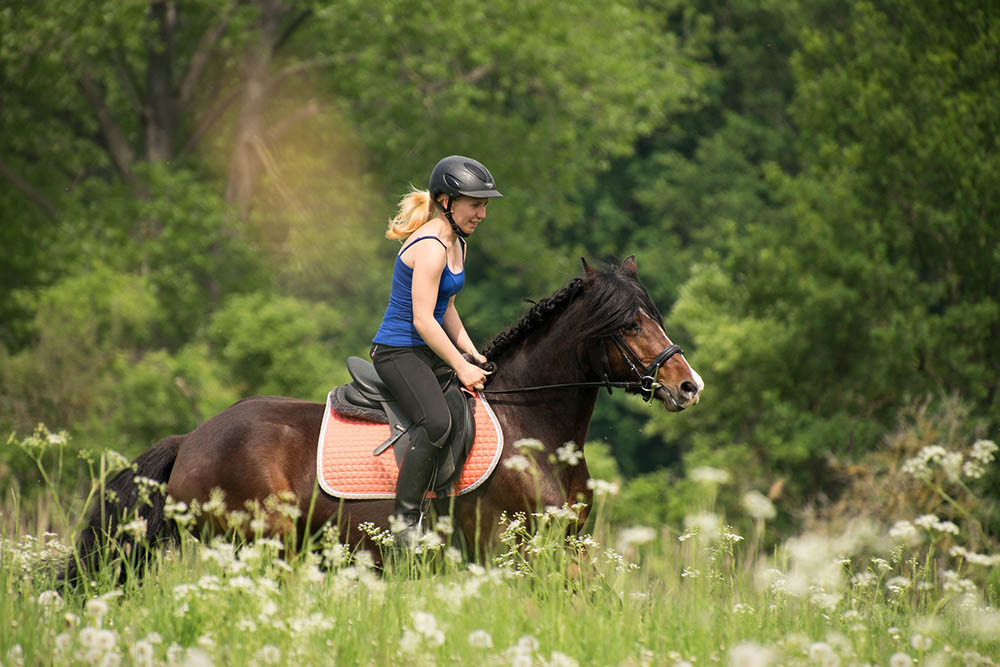
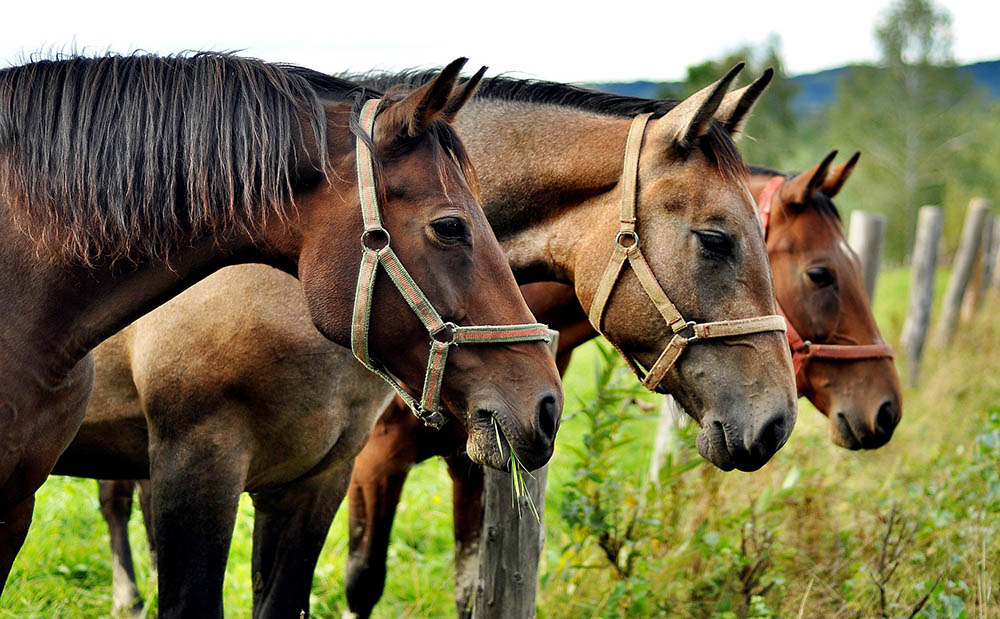
“Any change in a horse’s diet
is done gradually.”
A FINE BALANCE
Now that you know how to construct a diet that will create a cool effect on your horse, how do you go about changing your horse’s diet over in a safe way? Horses can have very sensitive systems that like to stay in a consistent eating pattern and intake. If disrupted, you and the horse can be in for a world of pain. It’s recommended that any change in a horse’s diet is done gradually to allow their system to adjust so they remain healthy and maintain a manageable energy rate.
“Changes in diets can really depend on the individual horse,” explains Holly. “For people wanting that cooler option, focus on a diet that does tend to be higher in fat and lower in sugar and starch, which is the safe option for the horse’s digestive system as well. Anything that is lower in sugar and starch will really be protecting that hindgut. Some people will choose that type of diet for that reason, which is perfectly suitable. Other people will choose that cool option because they’re a little bit nervous and they don’t want their horse to have any excess energy that might scare them.
“However, some horses are just predisposed to being quite hot and busy,” continues Holly. “We would be looking to minimise and control those outbursts that might happen that could potentially be a bit dangerous if we did give them too much energy. But then you’ve got on the other hand, owners of high-performance horses looking for extra energy, and then you can go to that hotter option. You can really tailor the diet to that individual horse and what that individual rider is really looking to achieve.
“We always want to change over gradually with any feeds. You want to be aiming for at least a week, ideally 10 to 14 days, depending on how large the meal is of course. Over that time, you would technically see a decrease in energy output until they were fully on to that new feed, and then hopefully, they settle down a little bit, but it can be quite dependent on the horse and what’s actually causing that behaviour.”
“Some people may want more energy for the weekend if they’ve got a competition and they might change the diet the day before. Potentially that will give them more energy the next day, but you’re risking the health of their digestive system, and you’re risking colic or even worse. As soon as you overload it or you change your horse’s feed, you change the composition of that digestive system. The microbes that live in that hindgut need time to adjust, otherwise you can cause colic. So, if we are wanting to build that energy level up, we need to do it gradually even if it’s over a few days, and we’re not adding a large amount in. Some people will do that leading up to a show and that might be suitable. But you just have to be aware that nothing can happen overnight because the horse’s digestive system is very tailored to what it’s currently eating. It lives in a fine balance.”
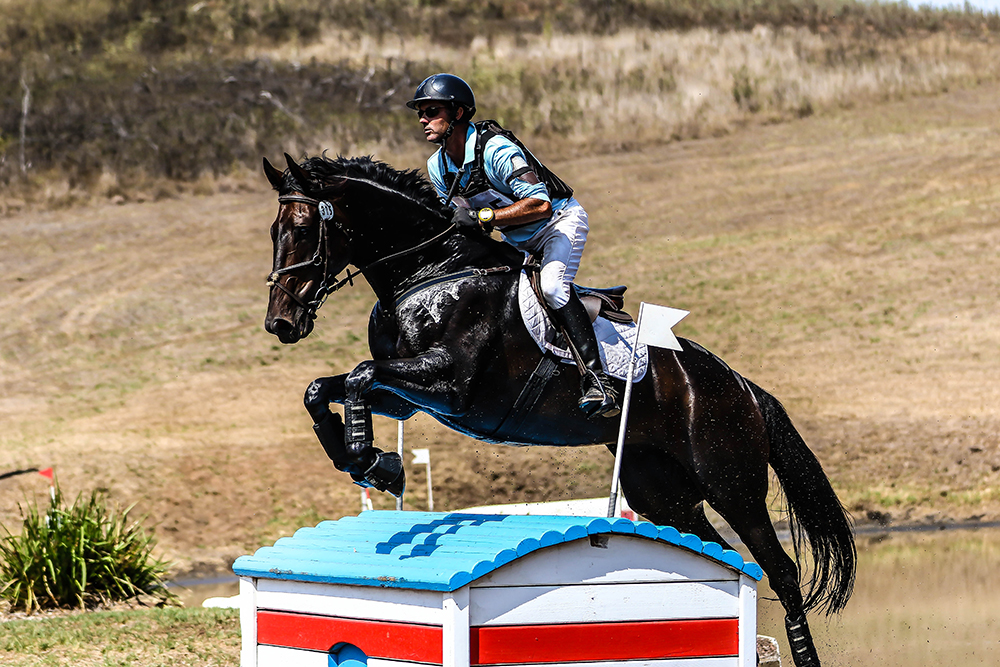
KEEPING THE CONDITION
One dangerous trap that some horse owners may fall into is accidentally underfeeding their horses when their diet is changed from a hotter to a cooler option. It’s the same as counting calories for a human diet. A human body needs a certain quantity of calories every day just to function, and then even more calories on top of that to fuel the body through school, work, and exercise. Certain foods will contain more calories or “energy” than others, and the same can be said for the hotter types of feed used for horses that are high in sugar and starch. As soon as a horse’s diet is changed to a cooler option, the “calories” in the cool feed will be less than the hot feed. But your horse still needs the same number of calories for their body, just in an energy form that won’t make them turn into an energiser bunny.
“What you need to remember is that if your horse is maintaining its weight on that really hot feed, it’s the higher starch and sugar that helps keep that weight on,” explains Holly. “If you do drop to a cool option, it’s important to consider that you might need to feed a little bit more to maintain condition. The other thing I always get people to look at is that they may not necessarily need to go all the way to the lowest starch option that might be safe for a laminitic horse, because you might just be at a very high level currently. You need to look at those current grains that are in their feed and think about potentially cutting a few of those out or dropping that starch back down to the next level. If you’re already on a high level, your horse might lose condition by dropping it too low and potentially lose enough energy for performance.”
One of the best ways to ensure your horse will maintain their condition while on a cool diet is finding a feed that will fuel their body without unwanted bursts of energy. One such feed is Mitavite Cool Vitality, which is used by professional riders like eventers Sam and Nicky Lyle.
“Cool Vitality is quite a versatile feed,” explains Holly, “It can be used for horses that are spelling or light pleasure riding right up into that medium level. It’s a feed that’s going to be providing a lower level of starch. We’re still giving enough energy for work but enough that we can handle that for most horses in most situations.

“We are really happy
with their condition.”
WHAT’S IN THE BAG?
“It is a barley-based feed, which makes it great for conditioning,” continues Holly, “but it also contains lupins, sunflower seeds, lucerne and other sorts of legume hulls which are higher in protein so we’re helping build that condition. Lupins, for example, are also really low in starch so that kind of balances out the starch level of barley. Then sunflower seeds are adding extra fat and a little bit of extra protein as well. It’s a really great all-round feed, and it’s also highly palatable. A lot of horses are going to be quite happy eating it so if you’ve got any fussy eaters, it’s a really great option. If you are unsure what to feed a horse, this is a really great option to start at. It is important to remember that it is what we call a ‘full feed’. It has a little bit of a higher feeding rate, which means that it’s good for a horse that does sort of need to eat a lot. For instance, a 500-kilogram horse needs that two to three kilos a day to keep their weight on.”
Eventing couple Sam and Nicky Lyle have recently moved some of their horses onto Cool Vitality and have been getting some fantastic results. “We have recently started using Cool Vitality on some of our performance horses and they love it,” says Sam and Nicky. “We started feeding it to some of the thoroughbreds who tend to be naturally sharp in their temperaments and have been thrilled with the results. They have all become more relaxed and rideable on Cool Vitality and we are really happy with their condition — they look terrific! We will be switching more of our horses onto it pronto!” EQ
You can find out more about Mitavite Cool Vitality here.

